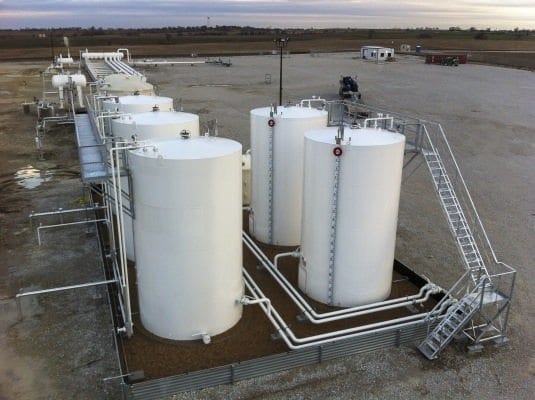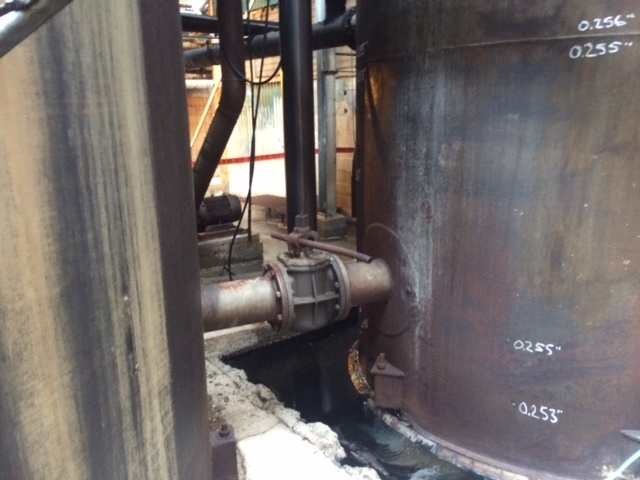The Future of API 650 Welding Inspection with Modern Inspection Systems Integration
Just How Welding Examination Functions: A Comprehensive Overview for Professionals
Welding evaluation plays an important duty in making certain the safety and security and reliability of bonded structures. It involves an organized method that consists of both visual inspection and progressed screening methods. Professionals have to familiarize themselves with vital requirements and regulations regulating the industry. Recognizing the common flaws that can emerge during welding is essential. This guide will check out these elements thoroughly, offering understandings into the processes that promote quality and integrity in welding.
Recognizing the Significance of Welding Inspection
While many may ignore the value of welding assessment, it plays an important function in making sure the integrity and security of welded frameworks. Reliable welding evaluation determines prospective issues and defects that can jeopardize structural strength and bring about catastrophic failures. The inspection procedure encompasses numerous strategies, such as aesthetic examinations, ultrasonic screening, and radiographic assessments, each contributing to the overall assessment of weld top quality.
In addition to protecting the structural stability, welding examination ensures conformity with market requirements and client specifications. By ensuring that welds satisfy required tolerances and features, evaluations help preserve the reliability and longevity of parts in different applications, from building to aerospace. Furthermore, a strenuous evaluation procedure cultivates a culture of quality and accountability amongst producers and welders. Eventually, welding evaluation is not just a procedural action; it is a critical method that underpins the safety and security and efficiency of engineered systems throughout diverse sectors.
Trick Specifications and Rules in Welding Assessment
The foundation of efficient welding inspection hinges on adherence to established laws and criteria. Various companies, such as the American Welding Culture (AWS) and the American National Criteria Institute (ANSI), stated standards that guarantee quality and security in welding techniques. Trick standards, such as AWS D1.1 for structural welding and ASME Area IX for stress vessels, offer thorough requirements for welding qualifications, procedures, and assessments. Governing structures, including those from the Occupational Safety and Wellness Management (OSHA), required safety practices and worker protections in welding atmospheres. Compliance with these requirements is crucial for accomplishing regular weld quality and lessening the danger of failures. Additionally, worldwide standards like ISO 3834 even more improve worldwide consistency in welding evaluation practices. Specialists need to remain notified regarding these guidelines to ensure that their assessment techniques line up with industry assumptions and lawful needs, thus securing both workers and architectural stability.
Initial Preparation and Visual Inspection Techniques

Efficient welding assessment begins with a complete pre-inspection list that guarantees all needed conditions are satisfied prior to the actual assessment occurs. Following this prep work, visual problem identification plays a crucial function in evaluating weld high quality, permitting assessors to find concerns such as splits or incorrect fusion. Together, these methods create the foundation for an effective welding inspection process.
Pre-Inspection Checklist
Prior to commencing any type of welding assessment, an extensive pre-inspection list is important to assure that all required preparations are completed and that visual inspection methods are efficiently used. Trick elements of this list consist of validating the welding treatment spec (WPS), making sure all devices is adjusted and in excellent working problem, and verifying that the examiner has the required certifications. Additionally, it is vital to assess any previous examination reports and to evaluate the workplace for safety and security threats. The inspector ought to likewise verify that all pertinent documents, such as product certificates and examination documents, is readily available. Finishing this checklist helps to develop a strong structure for an effective evaluation process, improving the integrity of the results acquired.
Visual Issue Identification
An effective aesthetic issue recognition process begins with careful first preparation and the application of established visual evaluation techniques. Assessors should ensure that the welding location is well-lit and clean, as adequate visibility is essential for detecting issues. A complete exam of the weld joint's surface area enables the recognition of gaps, such as cracks, damages, or porosity. Inspectors usually make use of tools like amplifying glasses or mirrors to boost their view of hard-to-reach locations. Additionally, they need to be acquainted with the certain welding criteria and guidelines appropriate to the project. By adhering to these approaches, inspectors can properly identify prospective problems, safeguarding the honesty of the weld and compliance with industry standards.
Non-Destructive Screening Approaches: A Summary
Non-destructive screening (NDT) techniques play a crucial role in the welding assessment procedure by making sure the honesty and reliability of welded frameworks without causing any damage (API 650 Welding Inspection). These methods allow examiners to examine the top quality of welds while preserving the elements being taken a Go Here look at. Usual NDT approaches include ultrasonic testing, radiographic testing, magnetic bit testing, and color penetrant testing, each offering unique benefits
Ultrasonic testing employs high-frequency acoustic waves to discover interior imperfections, while radiographic screening makes use of X-rays or gamma rays to envision the inner framework of welds. Magnetic bit testing reveals surface and near-surface defects by using a magnetic area and iron particles to the weld location. Dye penetrant screening highlights surface-breaking problems with the application of a tinted color. With each other, these NDT methods provide important understandings into weld quality, allowing professionals to make educated decisions concerning safety and compliance in welding applications.
Typical Problems and Their Implications
Identifying usual defects in bonded joints is necessary for preserving structural integrity and safety and security. Numerous problems can occur during the welding procedure, each bring potential effects for the general performance of the framework. Porosity, characterized by tiny gas pockets within the weld, can weaken the joint and endanger its load-bearing ability. Splits may create because of thermal tension or improper air conditioning, resulting in possible failure under stress. Insufficient fusion takes place when the weld metal does not fully bond with the base product, resulting in weak joints that may not withstand desired loads. Damaging, where the base metal is eroded, can likewise reduce the effective cross-section of the weld. In addition, excessive support can create stress and anxiety focus that might result in failure. Acknowledging these defects promptly enables for corrective actions, ensuring the durability and dependability of bonded structures in essential applications.
Tools and Devices Used in Welding Inspection
Efficient welding examination relies upon a variety of specialized devices and tools to assure the quality and honesty of bonded joints. Important instruments consist of aesthetic inspection tools, such as magnifying glasses and borescopes, which allow examiners to carefully check out welds for surface flaws. Non-destructive screening (NDT) approaches, such as ultrasonic screening, radiographic testing, and magnetic particle testing, are essential for recognizing internal flaws without damaging the product.
Measurement tools, including calipers and weld assesses, aid establish and analyze measurements conformity with requirements. In addition, hardness testers evaluate the mechanical homes of welded joints. Personal protective equipment (PPE) is also vital, safeguarding the safety of assessors while functioning in possibly dangerous environments (API 650 Welding Inspection). Each tool serves a specific function, collectively enhancing the effectiveness of welding assessment and adding to the integrity of finished tasks
Frequently Asked Questions
What Credentials Are Required to Become a Welding Inspector?
To come to be a welding examiner, individuals usually need appropriate qualifications, such as AWS CWI or CSWIP, in addition to experience in welding procedures, engineering concepts, and understanding of evaluation techniques, safety and security requirements, and appropriate codes.
How Often Should Welding Inspections Be Performed?
Welding assessments ought to be performed frequently, ideally at numerous project phases, consisting of pre-weld, during-weld, and post-weld. Frequency may likewise depend on industry criteria, project requirements, and the complexity of the welds included.
Can Welding Defects Be Repaired After Assessment?

Yes, welding defects can typically be fixed after examination. Depending on the seriousness and kind of problem, suitable techniques such as remodeling or additional welding may be utilized to restore architectural honesty and security compliance.
What Industries Require Normal Welding Examinations?

Different industries, including building, production, aerospace, and automotive, need normal welding evaluations - see here now API 650 Welding Inspection. These inspections assure adherence to safety criteria and quality assurance, minimizing dangers linked with structural integrity and functional efficiency in welded elements
How Do I Choose a Welding Evaluation Service?
To choose a welding inspection solution, one should consider qualifications, experience, qualifications, and market reputation. Additionally, reviewing consumer evaluations and ensuring the service fulfills appropriate site web standards can assist guarantee top quality inspections and reputable outcomes.

While numerous might undervalue the importance of welding examination, it plays a vital function in ensuring the stability and safety and security of bonded structures. Secret requirements, such as AWS D1.1 for structural welding and ASME Section IX for stress vessels, offer thorough requirements for welding procedures, evaluations, and qualifications. Reliable welding examination begins with a complete pre-inspection list that guarantees all required conditions are satisfied before the actual assessment takes area. Before beginning any kind of welding assessment, a detailed pre-inspection list is essential to guarantee that all necessary preparations are completed and that visual inspection methods are successfully used. Non-destructive screening (NDT) techniques play an essential role in the welding evaluation process by guaranteeing the stability and dependability of welded structures without creating any kind of damage.